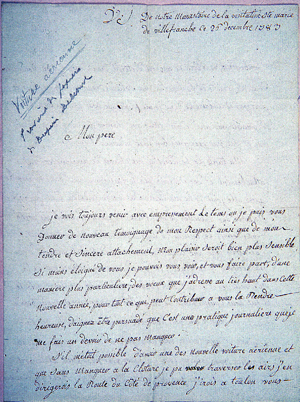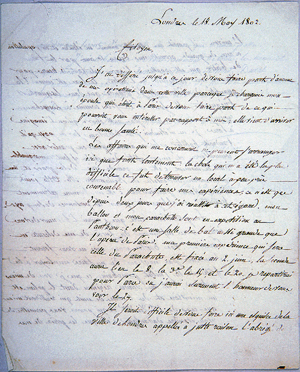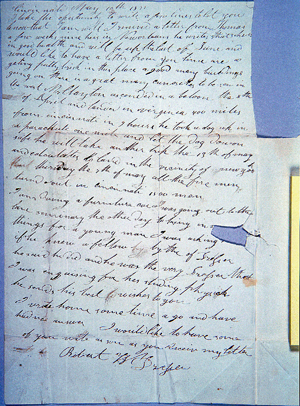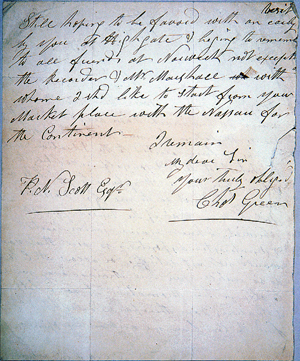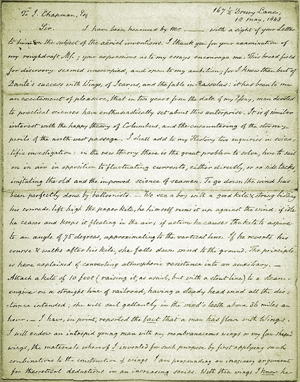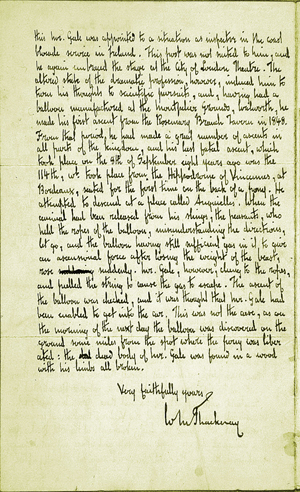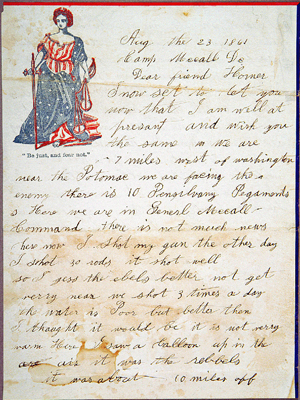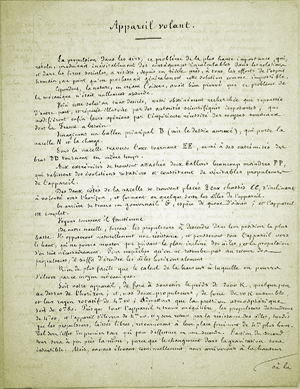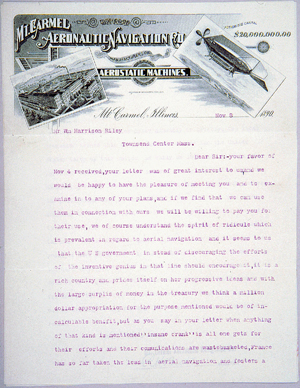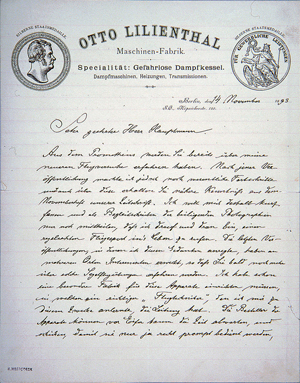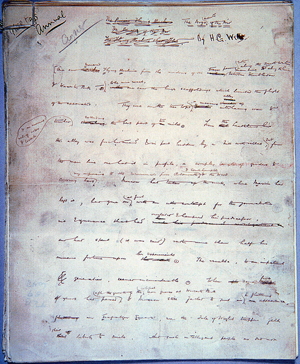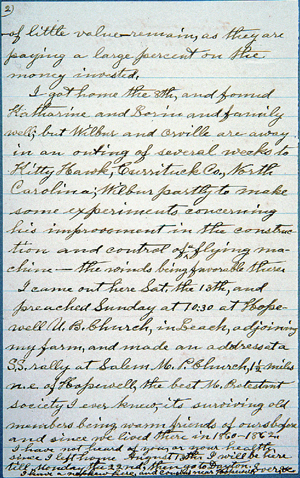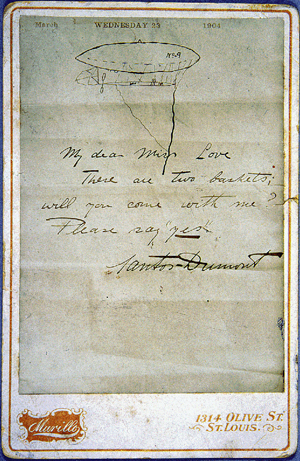Introduction By Clive Hart
As with the printed books, the strength of the Gimbel collection's 324 manuscripts and typescripts lies in their diversity. Together with letters from many of the most significant figures in the history of aeronautics since the late eighteenth century—the Montgolfiers, Pilâtre de Rozier, Gaston Tissandier, Otto Lilienthal, Octave Chanute, Count von Zeppelin, Alberto Santos-Dumont—it includes material helping to reveal the scientific, social, and personal contexts in which aeronautical experiments were carried out. Letters from the loquacious Faujas de Saint-Fond, who did so much to publicize the early balloon flights, tell us much about his personality. In addition to notes and letters from Wilbur and Orville Wright, several personal letters from their father, Milton, provide insights into the familial atmosphere in which the brothers lived and worked. Letters from Samuel Pierpont Langley reveal details of his dealings with others. Although most of the manuscripts are private communications, there is a complete, two-volume anonymous novel including a passage on a balloon flight, an Italian manuscript that relates what seems to be an imaginary account of the construction and inflation of balloons, and several manuscript drafts of material that was subsequently printed and published.
The choice of items to which special attention is given illustrates that diversity. Their authors range from the highly sophisticated to the barely literate, from scientists and technologists to practitioners of the arts, from the foremost aeronautical experimenters to the humblest onlookers. Although most of the letters were written in English (including several charming notes by a Francophone Brazilian) there are examples in French and German.
In addition to the holographs and typescripts, the collection holds a number of photocopies and facsimiles. Although the text of these items is often of importance, none has been included in the selection. In keeping with the overall cut-off date of this catalogue, manuscripts later than 1914 have been excluded.
Where available, bibliographical information for the manuscripts is given in the following order: author, type of manuscript (letter, note, etc.), where written, name of recipient, location of recipient, date as given, pagination, size, other relevant information, and the Gimbel collection call number. All manuscripts are pen/paper. (AL-autograph letter; ALS-autograph letter, signed; TL-typescript letter; TLS-typescript letter, signed.)

